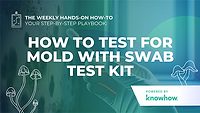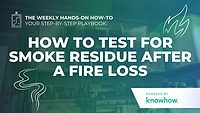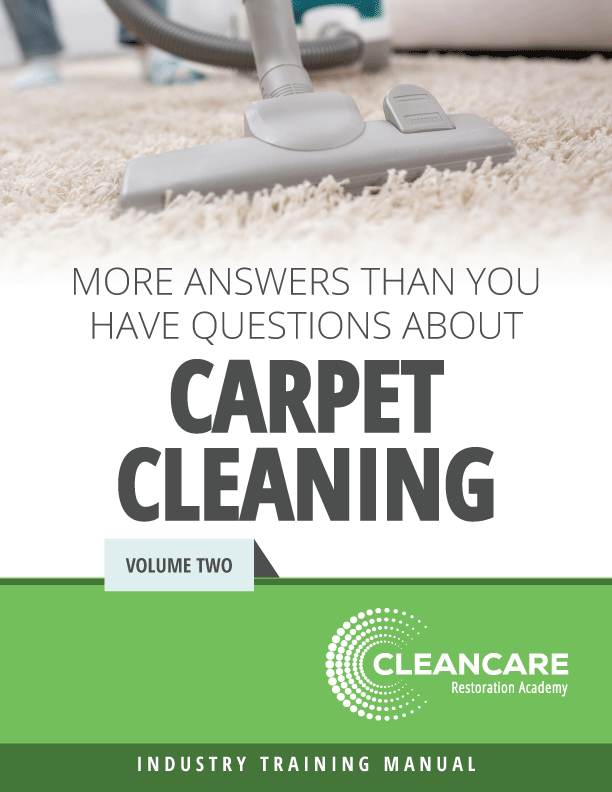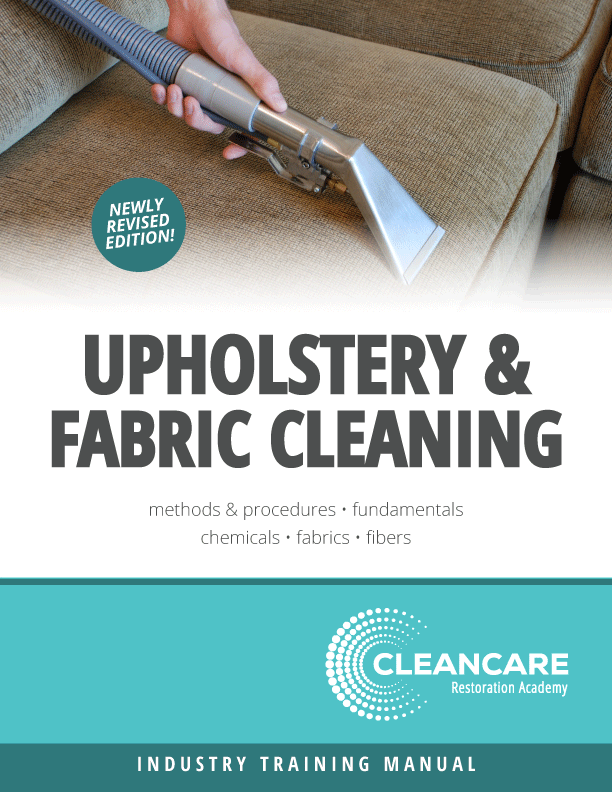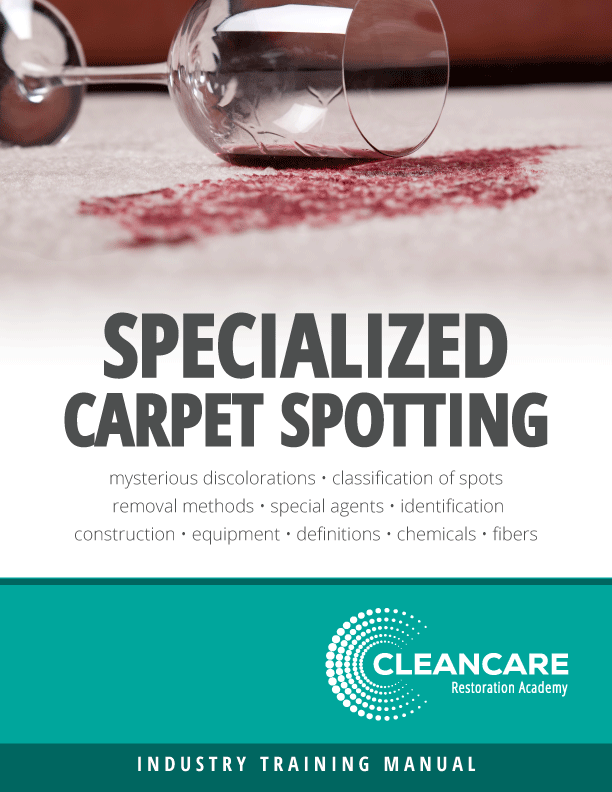Weekly Hands-on How-To powered by KnowHow
How To Test for Colorfastness on Upholstered Furniture
Protect Your Client’s Upholstery: A Step-by-Step Guide to Colorfastness Testing for Professional Cleaners
.jpg?1729002037)
Ever pull an old T-shirt from the back of your closet, only to realize it’s way lighter than when you first bought it? That’s the slow fade of a fabric losing its color over time, and it’s often caused by exposure to light, washing, and even the wrong cleaning methods. This is what happens when a fabric isn’t colorfast—it can’t hold up against external factors like water, cleaning products, or even air.
Now, imagine that happening to a client’s expensive upholstery. One wrong cleaning product or technique, and suddenly their favorite chair looks more like your faded T-shirt. That’s why testing for colorfastness is an essential for any professional cleaner. It helps you predict how fabrics will react, and ensures that the fabric’s colors won’t bleed, fade, or weaken when exposed to cleaning products or water, so you can adjust your approach and prevent irreversible damage before it happens.
In this week’s how-to guide, powered by KnowHow, we’ll show you exactly how to test for colorfastness, ensuring that every cleaning job leaves the fabric looking as good as new. Let’s get started!
Note: This Weekly Hands-On How-To was based on this template in KnowHow’s template library.
Step 1: Complete a Visual Inspection
Before diving into the actual colorfastness test, start with a thorough visual inspection of the fabric. Certain fabrics are more prone to color bleeding, and identifying potential risks beforehand can save a lot of trouble down the line. Pay close attention to:
- Multi-colored fabrics: Multiple dyes increase the chance of bleeding between colors.
- Rich or dark colors: Deep colors like reds are especially prone to bleeding.
- Natural fibers: Silk, cotton, acetate, and nylon can be sensitive to cleaning agents.
- Decorative fabrics and weaves: Fabrics like brocade, tapestry, or damask are known for delicate weaves and potential colorfastness issues.
- Older fabrics: Over time, UV exposure, pollutants, and age can weaken colorfastness in even the most resilient textiles.
Additionally, keep in mind that rayon, especially in high percentages, tends to shrink during cleaning. Consider running extra tests on rayon-heavy fabrics to ensure no surprises during the cleaning process.
Step 2: Obtain Client’s Approval to Proceed with Colorfastness Test
Before you start any testing, it's crucial to inform the client about the purpose and potential risks of a colorfastness test. Explain:
- Why testing is important: It determines whether the fabric’s colors will hold up during cleaning or if they’ll bleed.
- Potential outcomes: If the test shows signs of color bleeding, the client should understand that without proper treatment, the cleaning process could result in color loss or fading.
- How it helps the process: Let the client know that the results will guide your next steps, ensuring safe and effective cleaning.
Answer any questions the client may have, and secure their approval before moving forward with testing.
Step 3: Find an Inconspicuous Location on the Fabric
When performing the test, it’s vital to choose a hidden spot on the fabric where potential discoloration won't be noticeable. Common areas for testing include:
- Around zippers or buttons
- Underneath skirting or seams
- Low sections on chair backs or between cushions
- Corners or spots that stay hidden under other parts of the furniture
If needed, select a second testing spot for a more comprehensive analysis.

Step 4: Apply the Cleaning Product(s)
Once you've selected your test area, apply the full-strength cleaning product(s) you plan to use during the actual cleaning process. It’s important to test both sides of the fabric—especially in areas that receive less wear—because this will give a more accurate result. Keep in mind that fabric protection is often stronger on less-worn areas, so testing both sides is key to accuracy.
Step 5: Add Water
If hot water is part of the cleaning process, ensure you’re testing with hot water during the colorfastness test. Water temperature can dramatically affect how colors react, and testing with cool water but cleaning with hot can lead to inaccurate results.
Step 6: Clamp Test Area with an Absorbent Pad/Cloth
Instead of rubbing the fabric—which can damage it and alter test results—use an absorbent cloth or pad to gently clamp the area. Avoid any mechanical action, as rubbing can cause dye to lift without actually reflecting how it will react during washing. The purpose of this step is to simulate real-world cleaning conditions, not force an outcome.
Step 7: Allow Time for Colors to Bleed
Patience is key when testing for colorfastness. Allow the cleaning solution and water ample time to interact with the fabric. Rushing this step can lead to inaccurate results and potentially damage the fabric in the long run. Follow the manufacturer’s recommendations for how long the test should last.
Step 8: Check for Signs of Color Bleeding
Once the test is complete, thoroughly inspect the fabric and absorbent cloth for any signs of color bleeding. Look for:
- Watermarks or color outlines (rings)
- Changes in the fabric’s texture or appearance
- Dye transfer on the absorbent cloth
Even the slightest sign of color transfer means the fabric is not colorfast. This means the cleaning process will require additional testing, and possibly treatment, before proceeding. Always discuss the results and the next steps with the client.

Step 9: Proceed with Next Steps
If no bleeding is detected, great! Get the client’s final approval to move forward with the full cleaning process. If bleeding is present, work with the client to develop a plan for further testing, treatments, or alternative cleaning methods. The key is to ensure the best possible outcome while maintaining transparency and managing expectations.
Test Smart and Clean Confidently with KnowHow
Testing for colorfastness might seem like a small step, but it can make all the difference when it comes to preserving the look and longevity of your client’s fabrics. By taking the time to perform these tests, you protect yourself from costly mistakes and leave clients with results they can trust.
But in restoration, with so many specific steps for each seemingly small process, things can get convoluted fast. From knowing the right tests to remembering the exact procedures for different fabrics, it’s easy for details to slip through the cracks. That’s where KnowHow steps in, providing your team with clear, step-by-step instructions and on-the-job support—so nothing is missed, and your crew can work confidently every time.
See how KnowHow can simplify your processes and keep every step in check. Visit tryknowhow.com to learn more today.
Looking for a reprint of this article?
From high-res PDFs to custom plaques, order your copy today!




